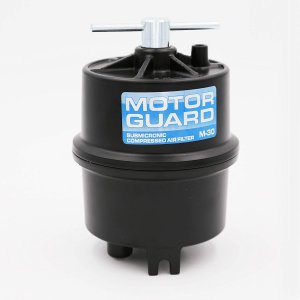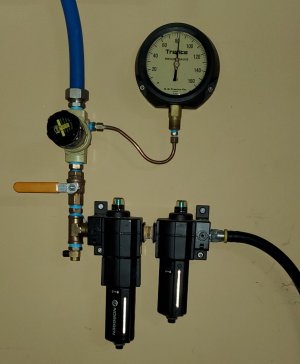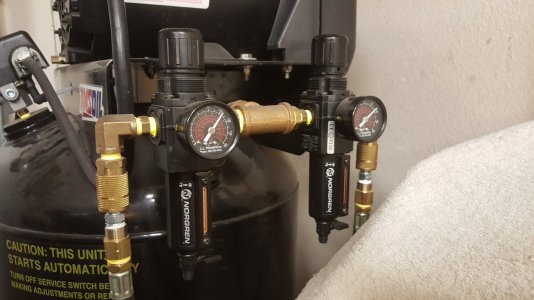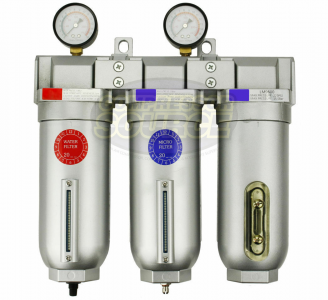- Joined
- May 27, 2016
- Messages
- 3,479
With great help from folk here, I now have a nice SGS regulator with air filter and water trap (the blue one in the first picture), and some 1/4" taper seal threaded couplers.
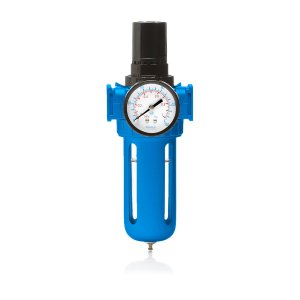 _ _ _ _
_ _ _ _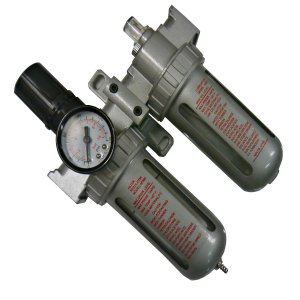
I looked hard in descriptions, and the user notes that it came with, and there is simply zero mention of oil, nor whether oil is removed or not!
I searched among loads of compressed air products, and all those I see with the two part construction, the second is always a "lubricator", like in the second picture. I do understand that some folk who use a lot of air tools that need oil, choose to add in the oil at some point in the air line. I will not be doing that. The kit I bought has a built-in regulator, and would be the primary regulator and water trap, right at the compressor. Some folk might choose to have a special separate outlet at the bench, with a second trap and drain fitted right there.
I want to keep the air lines clean. Some of my new air tools have a oil lubrication point, but I also have these small inline lubricators to fit right at the tool, should I need it.
Like these -->
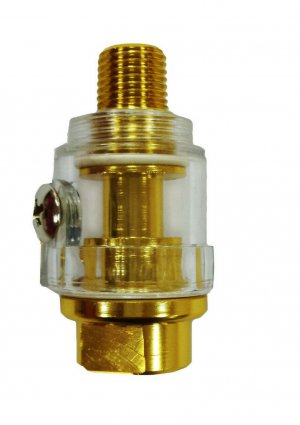
I want any oil at the compressor outlet to be removed somehow, and not contaminate the pipes. My compressor is the type that does have oil, and some will end up in the air if I don't clean it up.
Does the oil just end up in the water trap?
I would much appreciate if someone could explain exactly what it takes to remove oil.
 _ _ _ _
_ _ _ _
I looked hard in descriptions, and the user notes that it came with, and there is simply zero mention of oil, nor whether oil is removed or not!
I searched among loads of compressed air products, and all those I see with the two part construction, the second is always a "lubricator", like in the second picture. I do understand that some folk who use a lot of air tools that need oil, choose to add in the oil at some point in the air line. I will not be doing that. The kit I bought has a built-in regulator, and would be the primary regulator and water trap, right at the compressor. Some folk might choose to have a special separate outlet at the bench, with a second trap and drain fitted right there.
I want to keep the air lines clean. Some of my new air tools have a oil lubrication point, but I also have these small inline lubricators to fit right at the tool, should I need it.
Like these -->

I want any oil at the compressor outlet to be removed somehow, and not contaminate the pipes. My compressor is the type that does have oil, and some will end up in the air if I don't clean it up.
Does the oil just end up in the water trap?
I would much appreciate if someone could explain exactly what it takes to remove oil.
Last edited:


